Self-Service Kiosk Solutions: Revolutionizing the Way Businesses Operate
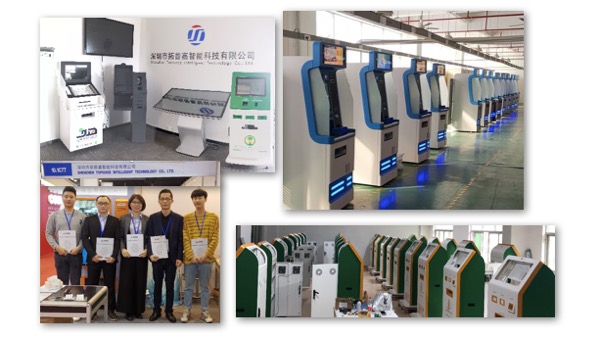
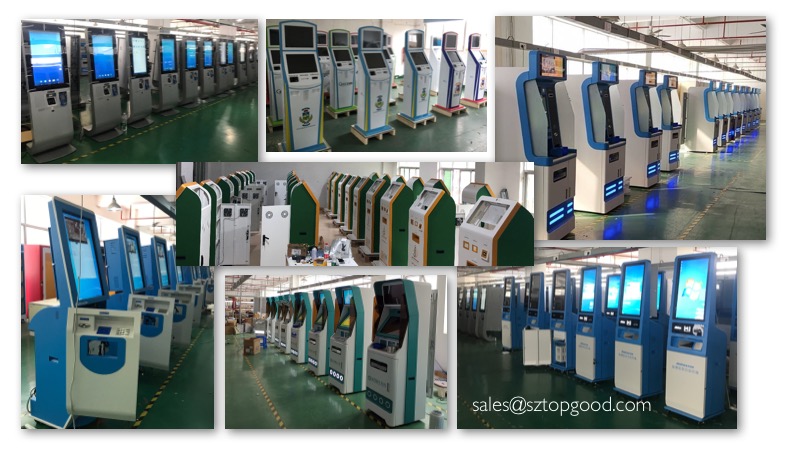
In today’s fast-paced world, businesses are constantly seeking innovative ways to enhance efficiency, optimize customer experiences, and reduce operational costs. One technology that has gained significant popularity is self-service kiosks. These versatile and customizable solutions have revolutionized various industries, from retail and hospitality to healthcare and finance. As a leading self-service kiosk manufacturer, Shenzhen TopGood Intelligent Technology Co., Ltd is at the forefront of this transformative trend.
Introducing Shenzhen TopGood Intelligent Technology Co., Ltd
Shenzhen TopGood Intelligent Technology Co., Ltd is a reputable self-service kiosk manufacturer based in China. With a commitment to meeting the ever-changing market demands through technological innovation and excellent customer service, TopGood has earned a prominent position in the industry. Their team of passionate and experienced professionals specializes in designing, developing, and manufacturing 100% customizable self-service kiosks to provide high-quality solutions to clients worldwide.
Versatility for Every Industry and Scenario
One of the key strengths of Shenzhen TopGood Intelligent Technology Co., Ltd is its ability to tailor self-service kiosk solutions to meet the unique requirements of different industries. These comprehensive and versatile kiosks can be seamlessly integrated into various scenarios, including retail, hospitality, healthcare, finance, and more. Retailers can benefit from self-checkout services, enabling quick and convenient transactions for their customers. Hotels can offer hassle-free self-check-in processes, enhancing the overall guest experience. Medical institutions can utilize self-service kiosks for self-registration and medical record inquiries, streamlining administrative processes. Financial institutions can provide self-service cash withdrawals and account inquiries, improving operational efficiency.
Enhancing Efficiency, Optimizing Customer Experiences
Shenzhen TopGood Intelligent Technology Co., Ltd offers a wide range of functionalities through their self-service kiosk solutions. These functionalities include self-service payments, inquiries, transactions, and ordering, all aimed at enhancing efficiency and optimizing customer experiences. Let’s explore each of these functionalities in detail:
1. Self-Service Payments
With TopGood’s self-service kiosks, businesses can enable quick, secure, and convenient payment options for their customers. These kiosks support various payment methods, including cash, credit cards, and mobile wallets. By reducing waiting times and providing a seamless payment process, self-service payment kiosks enhance customer satisfaction and loyalty.
2. Self-Service Inquiries
Customers often seek real-time information on product details, inventory status, order updates, and more. TopGood’s self-service inquiry kiosks provide easy access to such information, eliminating the need for customers to wait in line or seek assistance from staff. By empowering customers to independently retrieve the information they need, businesses can improve customer satisfaction and operational efficiency.
3. Self-Service Transactions
Completing various tasks quickly and efficiently is essential for both customers and businesses. TopGood’s self-service transaction kiosks simplify processes such as ticket purchases, appointment scheduling, and product returns. By offering self-service options, businesses can save time and resources while providing customers with a seamless and convenient experience.
4. Self-Service Ordering
In industries like food and beverage, self-service ordering has become increasingly popular. TopGood’s self-service ordering kiosks empower customers to independently choose products, customize their orders, and generate tickets or receipts. This not only enhances shopping convenience but also allows businesses to streamline their operations and reduce human error.
Customization and Personalization
At Shenzhen TopGood Intelligent Technology Co., Ltd, customization is a key aspect of our self-service kiosk solutions. We understand that every business has unique branding requirements, functional needs, and user interface preferences. Hence, our products can be fully customized according to the client’s specifications, ensuring maximum satisfaction. From the design and layout to the branding elements and software integration, TopGood’s self-service kiosks reflect the client’s brand image seamlessly.
Quality and Reliability
Shenzhen TopGood Intelligent Technology Co., Ltd prioritizes product quality and reliability. We subject all our self-service kiosks to stringent quality control and testing processes to ensure stability and durability. By utilizing high-quality materials and advanced manufacturing techniques, TopGood ensures that its products meet the highest standards. Additionally, comprehensive user experience testing is conducted to validate usability and functionality, ensuring a seamless and hassle-free experience for end-users.
Comprehensive After-Sales Services
In addition to our top-notch products, Shenzhen TopGood Intelligent Technology Co., Ltd provides comprehensive after-sales services to ensure customer satisfaction. This includes technical support, maintenance, and training. Our dedicated technical support team is readily available to address any inquiries or issues that customers may have. Regular maintenance services are also offered to maintain the performance and stability of the self-service kiosks. Furthermore, TopGood provides training courses to equip customers with the necessary knowledge and skills to effectively utilize their self-service kiosk solutions.
A Trusted Partner for the Future
Shenzhen TopGood Intelligent Technology Co., Ltd strives to be a trusted partner for businesses seeking self-service kiosk solutions. With our commitment to innovation, customization, and excellent customer service, we aim to create greater value for our clients. By continuously monitoring industry trends and market demands, TopGood ensures that its products remain at the forefront of technological advancements. We believe that through relentless pursuit and fast response to inquiries, we can build long-term relationships with our clients and collectively embrace future challenges.
Self-service kiosks have revolutionized the way businesses operate across various industries. Shenzhen TopGood Intelligent Technology Co., Ltd, as a leading self-service kiosk manufacturer, offers versatile and customizable solutions to meet the unique needs of different industries. With a focus on enhancing efficiency, optimizing customer experiences, and providing comprehensive after-sales support, TopGood is poised to shape the future of self-service technology. Contact us today to explore how the self-service kiosk solutions can transform your business.
FAQs
- All
- 3d Hologram LED Fan
- Bitcoin
- Business terms
- Digitial Signage
- Interactive Kiosk
- International Standards
- Mirror Display
- Self Service Solutions
- vending machine
You may see this or a similar statement on the Through-The-Wall (TTW) ATMs. Your local building codes may specify that a wall is to have a certain fire rating. Because a hole must be cut into the wall in order for the TTW to be installed, the fire rating of the wall may be affected. Be sure to check your local building codes to see how you are affected. The same advice is given for installing any equipment through a wall.
In most cases, yes. Most country compliance standards are very specific about modifications. Changing the hardware configuration of the ATM may bring the machine out of compliance. At this point most standards place the responsibility of compliance on the one performing the modifications.
CE is an abbreviation for ‘Conformité Européenne’. It shows that the ATM has met the requirements and directives set forth by the European Union (EU). The EU has created “directives” that define requirements for, among other things, electronic equipment.
This European standard requires the ATM to withstand 4000 volts from a contact discharge and 8000 volts from an air discharge. A contact discharge simulates the person actually making contact with the machine before the discharge occurs. The air discharge simulates the discharge occurring before the person makes contact with the machine. Triton does perform testing in excess of these values. Protection can take on many forms such as TVS diodes, ferrites, etc…
Humidity- 85% for 24 hours. The ATM must maintain records and maintain the security of the currency. Transient testing- simulates a brown out. Must pass 500 simulated brown outs without lessening the security of the currency or the accuracy of the records. Rain Test for Outdoor ATMs- will have a simulated rainstorm on the exposed control panel for 1 hour. No failures are allowed. Endurance test- must accurately maintain records and maintain security of the currency for 6000 successful dispensing transactions. Variable Temperature Test- for Business Hours +13°C to +35°C. For 24 Hour Level –1 indoor units 0°C to +49°C. For Outdoor units the outside portion will be tested from -35°C to +66°C. The ATM may fail to dispense but it must maintain records and maintain the security of the currency.
Failure of attack for either model is defined similarly. With the exception of trapping, the removal of 10% of the currency is a failure. Exposing the currency so that it may be removed is a failure. If a test device can trap 3 or more dispenses without being detected or disturbing the transaction, it is considered a failure.
24 Hours Service Level-1 containers are defined as those ATMs that are available for use anytime of day. The steel that the security container is constructed of should have a tensile strength of 50,000 psi. Entry from the customer access panel into the currency area of the 24 Hour should resist attacks for up to 30 minutes. Attacks to remove currency will be made using fishing, trapping, and forcing techniques. Tools may be wires, hooks, pry bars, hacksaw blades, and certain other tooling that may be concealed in clothing. Attacks on the other portions of the security container may be made using picks and portable electric tools such as drills and grinders. It shall resist attacks for up to 15 minutes. Most ATM to date have the security container portion of the ATM separated from the customer access panel area. Therefore, gaining access to the customer access area does not give entry into the security container.
A Business Hours ATM is defined as an ATM that is available during business hours only. It must be under the observation of a responsible party. The money must be removed at the close of business. The metal of the Business Hours is not as thick as that of the Level-1. Business Hours security containers must withstand forceful attacks on the seams and door openings of the container. The attacker may use wires, lines, chisels, pry bars, and wrenches to try to gain entry or remove the currency. Attacks that are quite are allowed to take 5 minutes. Loud attacks are allowed to take 2 minutes.
A: The scope of UL 291 is directed at the construction and security of the ATM when operated as intended by an authorized customer. The ATM must provide a limited degree of protection against unauthorized removal of currency. The records of the transactions must be made in order that the customer may be debited for currency dispensed. A limited degree of protection is required against the removal or manipulation of the records. There are only two types of security containers or cabinets. One is the Business Hours (BH) and the other is the 24-Hour Level-1 safe. Both must withstand attacks from someone trying to rob the currency or alter the records. Both have environmental requirements. And both have endurance requirements.
A general guide for kiosk investment
A general guide on investing through self-service kiosks:
1. Understand the different types of self-service kiosks available for investing. Self-service kiosks may be owned by financial institutions or third-party companies that offer investment products. Some kiosks offer only stocks, while others offer mutual funds, exchange-traded funds (ETFs), and other investment options.
2. Do your research. Before investing through a self-service kiosk, research the investment products and the kiosk provider. Look for reputable providers with a track record of providing reliable and cost-effective investment options.
3. Know your investment goals and risk tolerance. Determine your investment goals and risk tolerance before investing. Consider how much money you can afford to lose and how much risk you are comfortable taking.
4. Review the investment options available through the kiosk. Once you have identified a self-service kiosk that suits your goals and risk tolerance, review the available investment options. Consider the fees associated with each option and the expected returns.
5. Make your investment. Follow the prompts on the kiosk to make your investment. You will need to enter your personal information, select your investment options, and make a payment.
6. Monitor your investments. Keep an eye on your investments and review them periodically. Adjust your investments as needed to ensure that they align with your goals and risk tolerance.
7. Seek professional advice if needed. If you are unsure about investing through a self-service kiosk, seek the advice of a financial advisor. They can help you determine the best investment options for your goals and risk tolerance.
Who will benefit from purchasing self-service kiosk?
There are a variety of businesses and industries that could benefit from purchasing self-service kiosks, including:
1. Retail stores – Kiosks can be used for self-checkout and product information.
2. Restaurants – Kiosks can be used to allow customers to place orders and pay for their meals.
3. Transportation hubs – Kiosks can be used for purchasing tickets and checking in for flights.
4. Government offices – Kiosks can be used for self-service applications such as voting, driver’s license renewal and vehicle registration.
5. Healthcare facilities – Kiosks can be used for patient check-in and to access medical information.
6. Banks and financial institutions – Kiosks can be used for self-service banking transactions such as deposits and withdrawals.
7. Entertainment venues – Kiosks can be used for ticket purchases and event information.
Overall, any business that wants to improve efficiency and provide a better customer experience could benefit from investing in self-service kiosks.
What the self-service kiosk can do?
The self-service kiosks can assist customers in various ways. They can perform tasks such as:
1. Ordering food or drinks in restaurants or cafes
2. Purchasing tickets for movies, concerts, events, or flights
3. Checking in for flights or hotels
4. Printing documents or photos
5. Paying bills or fees
6. Providing information and directions
7. Signing up for loyalty programs or memberships
8. Offering interactive experiences such as games or surveys
9. Dispensing products such as drinks or snacks
Self-service kiosks can help businesses reduce wait times, increase efficiency, and improve customer satisfaction.
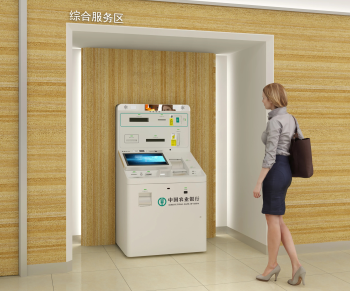
What is the Self Service Kiosk?
A self-service kiosk is a type of interactive computer terminal that allows users to perform various transactions and services independently, without the need for assistance from a human representative.
These kiosks are used in a wide range of settings, including retail stores, airports, hospitals, and government offices.
Users can interact with the kiosk through a touch screen or voice command, and the kiosk provides step-by-step instructions to guide them through the process.
Some common services that can be offered through self-service kiosks include ticketing, check-in, bill payment, ordering food, and accessing information.
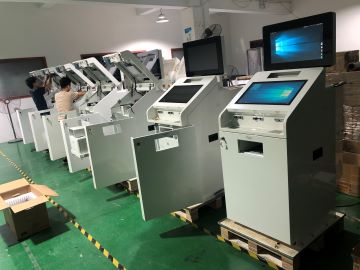
How will the self-service kiosk be packed?
To ensure safety during shipment, it is a must for a proper package.
Generally, the self-service kiosk is protected by 3 layers:
- 1st layer: shrink wrapping
- 2nd layer: foam protectors surround the edges
- 3rd layer: wooden case
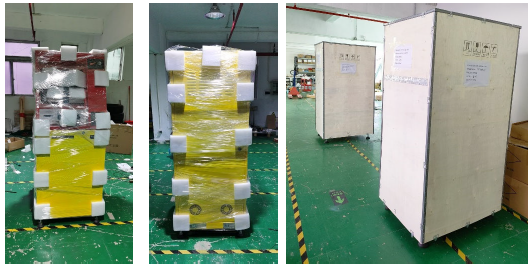
Generally, the lead time for the self-service kiosk is about 30 days.
For some special order, we could speed up for a shorter lead time.
Please talk to our sales representative to discuss details.
Yes, the Bitcoin ATM could scan the QR code either on paper or on a mobile phone.
Yes, we are happy to do customization to your machines. Prices vary depending on quantity so please contact us for pricing. We are also able to provide design services if you do not yet have something in mind.
The Bitcoin ATM machines are designed for indoor use.
Foam, stretch films and bubble pack.
20 to 30 days for the standard model after received the deposit.
For a customized model, the lead time will be negotiated.
It is not difficult at all, and you even don’t need a technician.
Our machine has intelligent self-diagnosing and self-correcting functions, so you will easily locate and fix the problem when there is trouble.
For example, when a tray motor gets jammed, an error warning promptly will be shown on the display screen, then you just need to access machine settings and try to get the motor to rotate for a circle by running “motor testing”, and if the motor is not broken inside, it will automatically get back to its initial position and sort the jam out.
We use the Embraco compressor by default, which is the largest and best manufacturer of compressors from Brazil. The performance and efficiency are high, the lifetime is 8 years on average, energy-saving, and environmentally friendly.
1-year warranty.
We offer you 1% of the most likely damageable spare parts for free.
Yes. Both Coin changer and Bill acceptor can be used in the vending machine.
We usually use ITL bill acceptors, which are made in the UK and with a service life of up to 5 years on average.
For coin changer, we use NRI, Tiger, MEID for options to meet different requirements.
10 years or above, and you can expect more than 20years.
Most of our displays such as Digital Signage, Holographic Display, Magic Mirror, Transparent Display support commune video formats like MP4, WMV, AVI, MPEG.
Yes, the Digital commercial displays have built-in speakers.
The Magic mirror display area is optional to have touch screen to allow user interactives.
Yes, sure.
You can edit the contents and manage the display time freely.
The content on the screen can be upgraded by the network, allowing you to remotely update your display through LAN, WiFi or 4G.
Or by insert an SD card with updated contents.
The freestanding and wall mount Digital Displays are equipped with a commercial-grade LCD panel with an LED back-light. They can be in use 24/7 for over 50,000 hours. They have no buttons, controls and are lots brighter than LCD panels found in home TVs or computer monitors. Their tempered glass face, rounded corners, metal enclosure with a magnificent slim profile, and aluminum frame all add to their captivating tablet-like aesthetics and also protect the inside components from potential damage.
Yes, the Mirror display is Plug and Play which means it does require any setup more than an Android smartphone.
Magic Mirror is a mirror integrated with a double-sided mirrored glass and an LCD panel on the back that allow viewing a reflection in the same way that a normal mirror, but when the screen is ON the video content is also visible, the black or dark areas of the video are not visible keeping the mirror effect which creates a cool effect.
Yes. The media player on the display will play all the supported files on the SD card in order. Once all videos have been played it will start again.
Yes, sure if your video team is professional. Knowing how to do it is the key to enhance the experience.
Changing content is very easy. Simple place the SD card with the new video content and the unit will start playing it.
The hologram device only reads bin file, other formats can not be read directly.
Also please noted that bin file can not be opened and need to be created with specific but free software that runs in Windows and Mac.
To create the video first follow these basic instructions:
1) Pure black background
2) MP4, AVI, Rmvb, Gif format video
3) 445×445 pixels
4) 10-15 seconds of video time suggested
5) JPG, PNG picture Ok too (Black background better)
No, you should be careful as it can cause damage to the person or object and also can break the display. We recommend placing it in a high place or with a clear plastic protector.
We will be here with you to give you all the support you may need.
The lifetime support policy provides access to the technical team that will help you in any question of our products.
Yes, the Hologram 3D display is plug and play, which means it does not require any setup more than add the video file by inserting the USB memory.
Yes, the Holographic LED Fan can be synchronized to create a bigger image, from two to dozens of display.
The Holographic LED Fan display doesn’t have HDMI input.
The files are locally stored in the internal memory.
The Z3H Holographic LED Fan can be connected remotely to make a bigger view.
In simple words, hologram technology is an optical illusion. But going deeper, at the point when a laser shaft is separated to make a visualization, the light waves in the 2 pieces of the pillar are going in indistinguishable manners. In this way, as you move your head around, the holographic picture seems to change similarly as the picture of a genuine article changes. Also, that is the reason 3D images seem, by all accounts, to be three-dimensional.
In simple words, a hologram is an optical illusion that gives you a sense of seeing things floating in the air.
Holographic LED Fans are displays with strips of RGB LEDs that produce an image that looks like floating in the air producing the full picture.
A 3D Hologram LED Fan display is a fan with strips of RGB LEDs that creates a 3D effect image and video by rotating its blades.
What can Digital Signage do?
Digital Signage enables you to deliver high impact digital media messages, such as images, videos, flash, text, etc, accurately targeted by time, location and market segment.
- attract attention
- educate an audience
- decrease perceived wait time in waiting rooms
- display product demos
- create additional revenue streams
- promote products and services
- train and motivate staff
Digital signage systems deliver customized media playlists to one or more digital screens, enabling a network manager to display targeted information to a specific audience at a specific place and time.
Compare to traditional signs, digital signage messages can be easily customized, changed out quickly and inexpensively and delivered to many displays at once.
Digital signage is often used to present a custom-tailored content mix, including product promotions, timely news, and upcoming events.
Screens can be mounted on walls, ceilings, shelving systems, or aisle endcaps, or integrated into freestanding displays and kiosks.
Digital signs are used in a wide variety of applications ranging from targeted retail advertising to internal employee communications and remote training.
Interactive kiosk differs from standard computer in that it runs application(s) developed for a specific purpose(s).
Normally, a kiosk using computer as the central control unit. (nowadays, Kiosk with Android is getting also more and more popular.)
The computer configuration is also variable due to different requirements.
Why invest on interactive kioks?
Because interactive kiosks brings many benefits for either enterprises or government.
Interactive kiosks work 24 hours a day, every day a year.
Enterprises deploy kiosks to:
- increase customer loyalty,
- strengthen their brand with target customers,
- and reduce operational costs.
Governments deploy kiosks to:
- reduce operational costs
- decrease repeating and simple works;
- bring more convenient to citizens;
Kiosk software is the system and user interface software designed for an interactive kiosk.
Kiosk software may offer remote monitoring to manage multiple kiosks from another location. Email or text alerts may be automatically sent from the kiosk for daily activity reports or generated in response to problems detected by the software.
Other features allow for remote updates of the kiosk’s content and the ability to upload data such as kiosk usage statistics.
Kiosk software is used to manage a touchscreen, allowing users to touch the monitor screen to make selections.
Standard or custom software developed for interactive kiosks provide customers with information, the ability to participate in loyalty programs, and transaction capability.
An interactive kiosk is a computer terminal featuring specialized hardware and software that provides access to information and applications for communication, commerce, entertainment, and education, etc.
An interactive kiosk is an interactive system designed for public use that delivers information or enables transactions.
What are kiosks?
- An open summerhouse or pavilion;
- A small structure with one or more open sides that is used to vend merchandise (as newspaper) or services (as film developing);
- A small stand-alone device providing information and services on a computer screen, also called interactive kiosks. This is what we supplying.
How much does a self service kiosk cost?
There are generally 2 types kiosk: informational and transactional. And kiosk comes with 2 parts: Hardware and Software, the quantity and level of customization will influence the cost a lot, especially software.
Will you want 1 kiosk or 500? Price per kiosk will drop drastically as quantity goes up, as the software development work is spread across a greater number of kiosks. Spread $10,000 in development costs across 500 kiosks and the cost is only $200 in development per kiosk.
The kiosk hardware cost will be influenced by configuration:
Is it tablet-based information terminal?
Is it a bill-pay stations?
Does it take payment in cash or card?
Does it give changes in cash?
Is it for Indoor or Outdoor?
…
When you start looking at costs, think of it as a 3 factor project:
1. Kiosk Hardware
2. Kiosk Software
3. Quantity
EMV is a global standard for credit and debit payment cards based on chip card technology used to protect against fraud.
Touch screens use touch technology to display device that allows a user to interact with a computer by touching areas on the screen.
Touch screen can be widely seen in daily life, e.g. on smart phone, tablet, etc.
SDK stands for Software Development Kit, which is a set of software development tools that allows the creation of applications for a certain software package, software framework, hardware platform, computer system, operating system, or similar development platform.
Firstly, thank you for placing order, you’ve made a good choice.
The order is started when we confirm we received the related payment.
We will re-check all your requirements with you, then make the kiosk drawing accordingly, drawing will be sent to you for approval, anything you may want change can be discussed at this stage.
After approved the drawing, we will start production for kiosk cabinet and collect related electronic components. From now on, changes on order may cause extra fee.
When kiosk cabinet finished, we will assemble all components in and do related tests.
After test, the goods will be packed and ready for shipment. We are glad to coordinate shipment for you too.
Once you received the goods, the order is completed, but the after sales service will last for lifetime.
Here is a video for what we will do to proceed order.
Card Printer V.S. Card Dispenser
Card Printer and Card Dispenser are widely used in self service kiosk terminal for instant card issuing. This article is about to find their similarities and differences.
Similarities:
- Both issue plastic card in standard CR80 size.
- Both able to encoding (read and write) Contactless Chip card and Contacted Chip card.
- Both able to read Magnetic strip card.
- Standard card input capacity is 100 to 200. Optional to expand.
Differences:
- Card printer is able to print information on card surface, while card dispenser can not.
- Card printer is able to write info into magnetic strip card, while card dispenser can not.
- Card printer is able add module for card embossing, indenting, while card dispenser can not.
- Card printer is generally with bigger size than Card dispenser.
- Card dispenser is able to dispense card in both plastic and paper material, while card printer can only print on plastic material.
- Card printer is generally more expensive than Card dispenser.
Conclusion:
Card printer can do more personalization on card surface, while card dispenser is a more economic choice.
We have many items for both card printer and card dispenser, tell us more and we will recommend the right one for you.
- Card material: Paper or Plastic
- Card type: Blank card, Magnetic card, Contactless Chip card and/or Contacted Chip Card.
- Card issuing capacity: like 100cards, 120cards, 150card, 500cards, 1000cards, 2000cards
- Will need printing, embossing and/or indenting?
We are Kiosk hardware solution provider, any hardware you want, donot hesitate to contact us by sales@sztopgood.com
Card Printer Reference Video
Card Dispenser Reference Video
Generally the quotation for kiosk is only for hardware, NOT include software.
Usually we provide kiosk machine hardware and SDK only, if you need software too, we will recommend good software partner for you.
We accept payment by:
- T/T
- L/C (Letter of Credit)
- Western Union (for small amount only)
We custom interactive kiosks according to requirements.
- Any size of screen
- Any operating system: Windows/Android
- Any kind of control unit: Computer or Android Tablet or Raspberry
- Any functions: accepting payment, display information, identify person, issuing card, ticket vending, way finding, etc.

